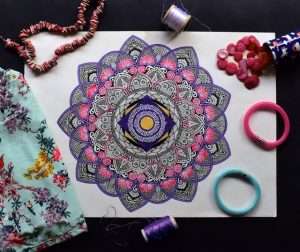I’ve been a digital artist for the past 5 years or so, creating 3D art. This is my own personal blog where I share the process behind making some of my artwork. I’ll be talking about the tools that I use, techniques that I employ, and other subjects related to 3d art.
The name of this blog is a bit of a pun. It’s not just a play on words, but also reflects my interest in creating something virtual (3d art) in such a way as to make it look real.
I’m an amateur when it comes to 3d art, but if you’d like to see some of what I’ve done before, check out the link below. Also feel free to contact me if you have any questions about 3d art or any comments on particular works!**
Graphic design has been around for centuries, but the ability to create 3D art is just a few decades old. The creation of 3D art is surprisingly new, and has only recently been made possible by technological advances.
You have probably seen this type of art before. Whether it’s a movie you watched or a video game you played, you’ve witnessed the result of graphic designers using their skills to create realistic-looking images.
The most obvious examples are found in action movies and video games. Stan Winston was one of the first designers to create realistic-looking dinosaurs for Jurassic Park. He and his team used computer graphics to make these dinosaurs look as real as possible. This led to even more visually stunning movies like Avatar and Lord of the Rings Trilogy.
3D art is used in many different ways, from building architectural renderings to developing video games. As technology advances, so does the realism of 3D art. Computer graphics software continues to develop, making it easier for graphic designers to create realistic-looking images for various purposes and media.
Three-dimensionality has been a central component of visual art since the late Renaissance. It is possible, of course, to make art that does not have three dimensions. But the majority of art that has survived the centuries and the mass digitization project we call progress are works that make use of the third dimension.
Trompe l’oeil is a tradition of painting that seeks to trick the viewer into seeing three-dimensional space on a two-dimensional surface. It was practiced by painters from the court of Louis XIV all the way down to modern times, although it never really took off in America.
Trompe l’oeil is about convincing people to see something as real even though they know better. This can be accomplished through skillful brushwork and attention to detail, or through tricks such as deliberately leaving an object out of focus or moving a light source so that shadows fall in unexpected ways. The goal is not just to produce an image but also to produce an experience; one doesn’t just look at a trompe l’oeil painting, but feels it as well.
Trompe l’oeil rose from humble origins as “drolleries”, faux architectural elements painted on walls for amusement and later incorporated into actual architecture
3D art is a complicated process. It is the process of making 3D models that can be used in games or movies. Making 3D art takes long hours and much patience. The first 3D art was made 50 years ago, but it wasn’t until the 1990s that 3D art really became popular. Before computers were invented, all 3D art was hand-drawn. The first computer program was made in 1973. It was programmed to make 3D models, but they weren’t very good looking. In 1991, a computer could make only one picture at a time; now they are able to make thousands of pictures at the same time. Computers have made things much quicker and easier, however there are still some things that take longer to do than before computer programs were created.
The history of 3D art goes back 1000 years, when sculptors carved statues out of stone. Sculpting work took many years to complete. In the 14th century, sculptors started using a material called terra cotta to make sculptures instead of stone; however, this material did not last as long as stone due to weather conditions such as rain and other elements like wind and sun.
In the 1770s, American painter Alexander Cozens developed a technique
“The computer is an exciting new tool for visual expression, but it’s not magic. The more you know about how it works and what makes good design, the better your art will be.”
Computer art is everywhere. Computers are used in almost every movie, commercial and video game on the planet. In fact, they are becoming so advanced that computers can do things that only humans could do before. Nowadays, it’s hard to imagine a big budget movie being made without any computer generated effects in it.
While this blog is focused on a specific type of computer graphics known as “3D”, most of the content will be relevant to both 2D and 3D artists alike. After all, the techniques used to create computer generated images are very similar, regardless of whether they are 2D or 3D.
Although this blog focuses mostly on 3D art using 3D software (such as Maya or 3DS Max), I hope that many 2D artists will also find this useful as well!
I hope you enjoy reading my blog! And if you have any questions please feel free to leave a comment!
From a historical perspective, the concept of 3D is a new one. At one time, the idea of creating three-dimensional art (or “sculpture”) was considered novel, even slightly ridiculous. Today, it’s hard to imagine a world without 3D art; it’s everywhere we look. Where did it come from?
The concept of 3D art has existed since the mid-19th century; before then, people were satisfied with two dimensions. In fact, they were perfectly content to produce two-dimensional paintings. The first attempt to create 3D art can be traced back to the middle ages, where artists such as Giotto di Bondone (c. 1266 – 1337) and Arnolfo di Cambio (1245 – 1302) created paintings that appeared to be of another dimension but in actuality were just flat objects made with careful attention to perspective and shading.
Example of a 2d painting by Giotto di Bondone (c. 1266 – 1337).
Giotto di Bondone – Fresco Scrovegni Chapel Padua 1320
Giotto di Bondone – Fresco Scrovegni Chapel Padua 1320
Arnolfo di Cambio – Detail of St



